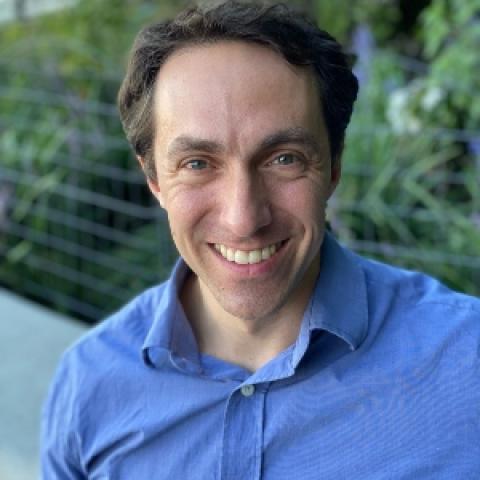Eva Moreda is lecturer in music at the University of Glasgow and specializes in the cultural and political history of Spanish music of the nineteenth and twentieth centuries. Her latest book is Music Criticism and Music Critics in Francoist Spain (Oxford University Press, 2016). Apart from her academic commitments, she has a keen interest in the performance of medieval and renaissance music on voice, portative organ, and recorders.

We quickly managed to build a routine that involved rising early, eating some homemade cake for breakfast, and spending the day singing and playing late medieval music (Las Huelgas, Dufay, Sankt Gallen) on our portative organs, switching between solo, pair, and large group work as need arose, always with a generous pause for lunch in which conversations about medieval sounds and how to make them come alive today flowed generously. There were five of us, and although all of us arrived in San Marino not knowing any of our fellow students, the week we spent together at the Stabat Mater Convent, in the village of Borgo Maggiore, felt like part rehearsal and part retreat, and not so much like just one more summer school.
Officially, though, it was indeed the latter: the first International Late Medieval and Renaissance Course (the latest addition to the San Marino International Music Summer Courses series), taught entirely by Cristina Alís Raurich, one of the most exciting portative organ performers of our day. While I will not go as far as claiming that the portative organ—first documented in the thirteenth century and disappeared, after a long decline, in the sixteenth century—is making a comeback, interest is certainly on the rise from professional and amateur musicians alike. Indeed, three participants in the course had never played a portative organ before, which was no obstacle for them to successfully participate in the student concert held at the end of the course at the Church of San Francesco.
One of the main tenets of Raurich’s teaching philosophy is that the portative organ is not a keyboard instrument, but a wind instrument; the performer, with the instrument placed on his or her thigh or hanging from his or her body by means of a strap, plays the small keyboard (about two octaves) with one hand and manipulates the bellows with the other. It is the ability to modulate one’s pressure on the bellows that renders the music expressive and makes true the medieval notion that the organ is the voice of the doctors of the Church, capable of saying, singing, moving, and persuading. With this in mind, we set out to unravel, with our voices and our organs (sometimes in combination, sometimes separately), some of the repertoire that Raurich had chosen for the course.
The overarching theme was the Sequence. Sequences are liturgical texts that seek to illuminate aspects of the Gospel or the liturgy, and hence tend to be time or place specific: Sequences were composed for specific events of the liturgical year (Easter, Christmas, Pentecost, etc.) and occasionally for specific places (on the feast of a patron saint of a city or community). Originally evolving from the last syllable of the Alleluia that precedes the Gospel in the Catholic Mass, Sequences soon developed independently as new compositions of both music and text and flourished throughout the Middle Ages until the Council of Trent restricted their use.
The earliest Sequences we worked on came from the Castilian Codex Las Huelgas. Dating from the early fourteenth century, the codex is a compendium of the advances in polyphony that European music had seen in the previous two centuries. Working in pairs with portative organs on pieces originally intended to be sung by the female voices of the Las Huelgas monastery allowed us to work on phrasing and expressivity, paying close attention to the text and to each other. There followed two lesser-known pieces by Flemish composer Guillaume Du Fay, dating from approximately a century later than Las Huelgas. Here, Du Fay alternates the original Gregorian chant with interpolations of three-part polyphony: complex counterpoint that took the whole group many hours to put together with instruments and voices, and lots of food for thought on the relationship (musical, textual, rhetorical) between the traditional monophonic chant and the more recent polyphonic glosses.
The sequentiary of Joachim Cuontz was copied in the Swiss monastery of Saint Gallen in the sixteenth century and contains Sequences dating from earlier in the Middle Ages. Unlike the Du Fay and Las Huelgas music, these pieces are notated for one voice with no accompaniment, and so considerable work was devoted during the course to transforming the sparse medieval notation and words into music, adding bourdons and percussion, distributing the phrases between instruments, solo voices, and chorus, and making decisions aimed at conveying the full extent of the rhetorical nuance of each of the texts.
Working on the sequentiary provided one further example of Raurich’s sensitivity as a teacher: instead of holding formal lectures, she chose to introduce a range of theoretical topics pertinent to the history and performance practice of medieval music in a way that never took us far away from the music-making. Certainly, this was the best possible start to the International Late Medieval and Renaissance Course in San Marino, and here’s hope to it becoming established as one of the top summer schools for keen performers of medieval music worldwide.
Course website: www.sanmarinoartist.com




